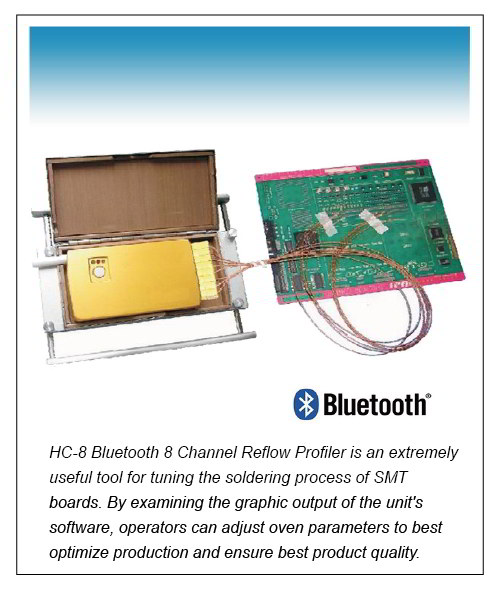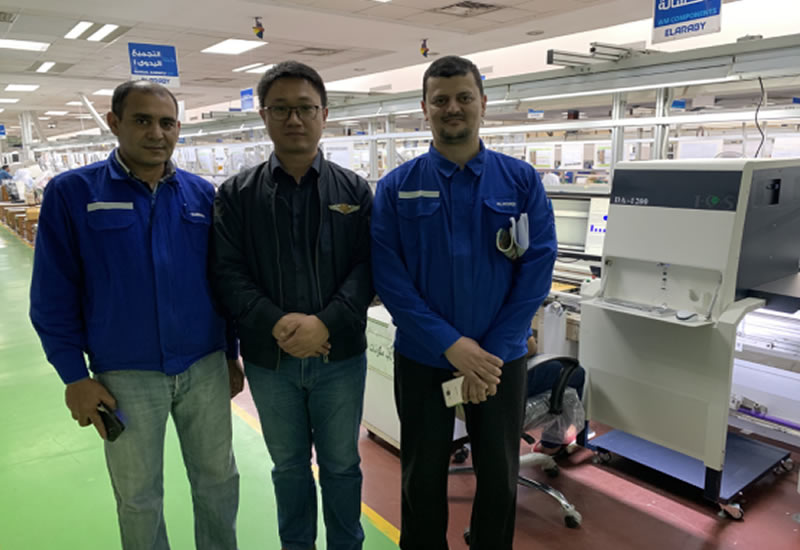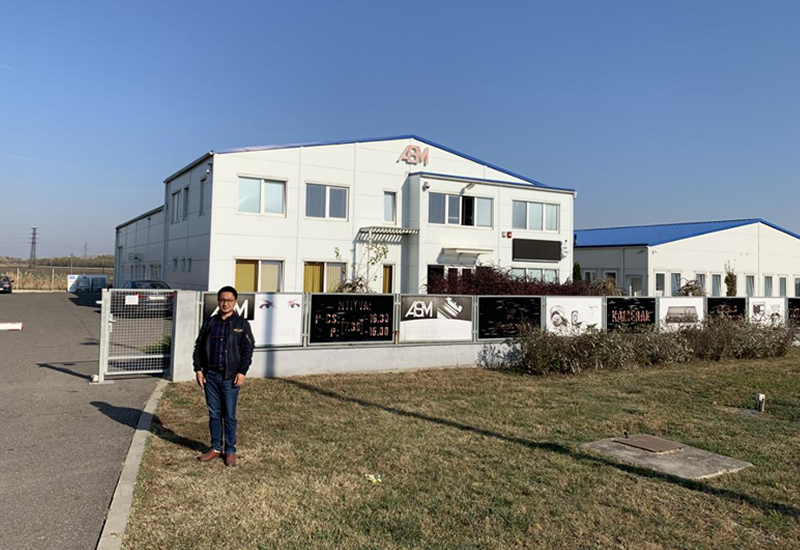
One - Profile’s importance in reflow soldering
Reflow soldering is a main method to form solder joints on SMT base-panels and so is a core technology in SMT process. Defects caused by improper design of surface-mount PCBs, solder paste printing and component mounting will eventually find expression in soldered products. The purposes of all process controls during surface mounting are to realize high soldering quality. If there is no reasonable and feasible reflow soldering process, any process control before said makes no sense. The form of reflow soldering process mainly is the profile, referring to the curve of temperature change over time which is tested on SMT component. Thus, profile is an important factor to decide soldering defects. Defects caused by inappropriate profile mainly include cracks, warped components, tin sweats, bridging, Pseudo soldering, cold soldering, PCB delamination or blister, etc. Therefore, appropriate design of profile can result in higher yield and reliability and reasonable control of profile has a pivotal role in soldering process.
Two - Reflow profiles’ general technical requirements and main forms
1. Profiles’ general technical requirements for each stage,In general, profile can be divided into three stages: Preheating, reflow soldering and cooling.
Preheating: Preheating refers to heating which is to activate the flux and avoid any defect due to rapid heating when component is soldered.
Preheat temperature: Temperature is set according to what solder paste is used and what conditions are recommended by manufacturers. Generally, it is set at 80~160℃ and temperature should rise slowly (to get the best profile). For traditional profile, constant temperature zone lies between 140~160℃. Please note that high temperature results in much faster oxidation. In high-temperature zone, oxidation speed may increase in a linear way; if it is preheated to about 150℃, oxidation rate may be several times of that in room temperature. Please see attached figure for the relationship between copper plate temperature and oxidation speed). If preheat temperature is too low, flux may not be activated fully.
Preheat time: It depends on the component with highest heat capacity, PCB area, PCB thickness and performance of solder paste used. Generally, 80~160℃ preheat stage takes 60 ~120 seconds, thus effectively removing the volatile solvent in solder paste, reducing the thermal shock for component, getting flux fully activated and temperature difference smaller.
Temperature rising rate during preheating stage: In terms of heating stage, low temperature rising rate from room temperature to melting point is expected to reduce most of the defects. In order to get the best profile, temperature rising rate is recommended to be 0.5~1℃/second; for traditional profile, it is better to use a rate of 3~4℃/second.
Reflow soldering:Peak temperature during reflow soldering is usually decided by solder’s melting temperature, base-panels’ and components’ heat-resisting temperatures. Generally, minimum peak temperature lies at around 30℃ above solder’s melting point (for currently used Sn63-pb solder, its melting point is 183℃, so the lowest peak temperature is about 210℃ or so). Too low peak temperature may lead to cold junction and insufficient wetting easily, and thus cold soldering due to insufficient melting. Generally, the highest temperature is about 235℃. If temperature is too high, epoxy base-panels and plastic parts may be coked and delaminated easily. Moreover, excess co-boundary metal compounds will form, which may lead to brittle solder joints (soldering strength is affected).
Time length when temperature is over solder’s melting point: Affected by such factors as co-boundary metal compound’s formation rate and within-solder salt-base metal’s decomposition rate, co-boundary metal compound’s formation and deposition not only is directly proportional to temperature, but also to the time length when temperature is over solder’s melting point. In order to reduce co-boundary metal compound’s formation and deposition, time length when temperature is over solder’s melting point must be reduced, which is generally set between 45~90 seconds. This time limit needs a high temperature-rise rate so that it can rise from melting point to peak temperature rapidly. Meanwhile, components’ resistance to thermal stress should be considered, so rising rate must be set between 2.5~3.5℃/second with the highest change rate of not more than 4℃/second.
Cooling: Low cooling rate when temperature is over solder’s melting point will lead to the excessive formation of co-boundary metal compounds and form big grain structure on solder joints easily, thus reducing soldering strength. Generally, this phenomenon occurs at melting point or a temperature a little lower than the melting point. Rapid cooling leads to too high a temperature gradient between components and base-panels, causing mismatched thermal expansions and leading to solder joints’ and soldering pads’ fissions and base-panels’ deformation. In general, the permissible maximum cooling rate is determined by components’ tolerance to thermal shock. Considering all the above factors, cooling rate in cooling zone is generally set at about 4℃/second and it is okay when it cools to 75℃.
2. Widely used two profile modes now
Warm-up and warm-keeping mode (traditional profile)
Explanation: Temperature rises from its initial value rapidly to preheating value within the range of 140~170℃ and then is maintained. TPHH-TPHL depends on reflow oven’s capacity (about ±10℃). Temperature is kept unchanged for about 40~120S as preheating zone, again rises quickly to reflow zone, finally cools rapidly to cooling zone (temperature change rates are kept below 4℃/second).
Feature: Usually, low preheating temperature is chosen, thus heat affects components slightly (low stress is caused to components), accordingly heating time can be prolonged to activate the flux. Meanwhile, temperature rise is relatively violent from preheating zone to reflow zone, so soldering flow is easy to worsen and migrate and flux’s activation temperature may be too low.
Gradual warm-up mode (preferred profile)
Explanation: Temperature rises to about 175℃ with a low rising rate of 0.5~1℃/second and to about 180℃ with a gradient of 20~30 seconds, jumps to about 220℃ with a rate of 2.5~3.5℃/second, and finally cools down quickly with a rate of no more than 4℃/second. The key point to control is to maintain a certain temperature rising rate and ensure that preheating’s end point comes near to tin’s melting point.
Feature: Components are not affected by violent temperature change and flux’s activation temperature can be set higher, but flux’s activation time is too short and high preheating temperature affects components easily.
By comparing the above two reflow profiles, the main difference between them is that the latter has no plateau structure (i.e., homothermal heating zone) in it.
Because of the structure and heat absorptivity differences between base-panels and components and the limitation of equipment’s controllable heating rate, base-panels’ temperature differences still exist when they are going through the reflow oven. With the help of a balancing zone like a plateau to reduce the temperature gradient, temperature is kept for a period of time when hot-spot temperature reaches below the solder’s melting point, so that the cold-spot temperature will catch up with it. After each component reaches the same temperature, another quick temperature rising program will raise component temperature to the peak one, which can avoid partial cold soldering or partial high-temperature carbonization effectively.
On the other hand, after the former obtains a plateau structure, a rapid heating process will appear inevitably in the stage from room temperature to homothermal preheating and the stage from homothermal period to solder melting and this rapid heating process has a close relationship with such defects as solder balls due to splash down and warped components due to imbalanced wettings on components’ two sides before solder’s melting point. Many quality problems are expected to be prevented and eliminated by using linear heating profile in the stage from room temperature to solder’s melting point.
3. Commonly seen reflow soldering defects’ relationship with profiles (only based on consideration of reflow process)
Bridging (short circuit) is caused by solder’s hot melting down which only happens in the soldering stage when temperature is below the melting point. Due to molecules’ thermal motion, viscosities of the materials with fixed compositions and chemical structures rise along with the fall of temperature, viscosity fall in higher temperature causes more serious hot melting down. Temperature rise, on the other hand, often causes flux to release more solvent and this leads to the increase of solid contents and thus viscosity rise. Due to the fact that the former is only related to temperature and the latter, total solvent’s reduction, is a function of both time and temperature, so under the known temperature, solder paste’s viscosity with lower temperature rise rate is higher than that with higher temperature rise rate. So, we require that temperature rise rate is generally lower in the preheat phase, thereby reducing the occurrence of short-circuit.
Tin sweats: Tin sweats are formed this way. Along with the process of volatile solvent being removed from the solder paste in preheat stage, solder paste gasification occurs. If the cohesive force among metal powders in solder paste is smaller than the force created by the gasification, a small amount of solder paste will leave the soldering pad and some of them may hide under the chip components. When reflow soldering, these solder paste will melt and then be forced out from under the sheet-type resistor-capacitor units, thus forming the tin sweats. It can be seen from its formation process that the higher the preheat temperature is and the faster the preheat speed is, the more seriously will the solder paste be splashed during gasification, so the more easily tin sweats are formed. At the same time, the higher the temperature is, the faster the solder oxidation will be. The oxide film on the surface of solder powder can prevent solder powder from melting together well, thus forming tin sweats. But, this phenomenon can be controlled effectively by using proper preheat temperature and warm-up speed.
Capillary: When melt solder wets to the component pin but still stays far away from the contact area, Pseudo soldering will be caused. The reason is that when solder is melting, pin temperature is higher than pad temperature. Improvement measures: Use more bottom heating (reflow oven with upper and lower heating modes are used) or very low temperature rise rate (between preheating and melting point) to realize an equilibrium with soldering pad before pins are wetted by solder.
Three - Reflow profile test
If you want to test the E-THERM reflow profile, temperature collector (i.e., temperature memory device) which can go into the oven chamber along with the PCBs is generally used. This collector is equipped with K-type thermocouples (which are made from different materials depending on the range of temperatures to be measured and measuring accuracy). Preferred thermocouple diameters are 0.1~0.3 mm. After testing, data in memory device are transferred to a PC-dedicated test software to analyze and process and then component profiles are printed out.
1. Installation of thermocouple
(a) When installing and using thermocouple to sense temperature, you must make sure that no short circuit occurs except the test point. Otherwise, you are unable to guarantee the test accuracy. Test points should be as small as possible.
(b) When thermocouple is connected to memory device or other test equipment, its polarity shall be consistent with the equipment requirements. Thermocouple changes temperature to electromotive force, so polarities should be identified when connecting the thermocouple. (Our currently used thermocouple’s plugs have both positive and negative pins)
2. Selection of test points
Generally, at least three test points are needed which can represent temperature changes on components (reflecting the temperature changes of high-, medium- and low-temperature areas on components). In general, area with the highest temperature lies in the middle of edges without components perpendicular to the direction of transmitting the PCBs; area with the lowest temperature lies at the soldered terminals of large components (PLCC, QFP, etc.) near the center of the PCBs. In addition, test points should be set on the surface of components with poor heat resistance or based on clients’ specific requirements.
3. Installation of test points
Thermocouple should be connected with the testing areas reliably. Otherwise, thermal resistance may be caused. Also, materials contacting or fixing the thermocouple should be as less as possible, because its thermal insulation or endothermic effect will affect the authenticity of thermocouple measurements directly. The commonly used four thermocouple connection modes include:
A. High-temp solder
Its features include higher melting point than 290℃, high thermal conductivity, low thermal resistance between thermocouple and PCB surface, high mechanical strength, reliable connection, small measurement error, continuous testing, difficult soldering, inconvenient change of test points, easy damage of soldering pads or components due to overheat, and inconnectability between thermocouple and non-immersed surface. Suitable for continuously testing the fixed points.
B. Adhesive
Its features include connectability between thermocouple and non-immersed surface, high endurance of several cycles of reflow soldering temperatures, bad operatability after curing, and difficult removal of residual adhesive. Suitable for continuously testing the fixed points.
C. High-temp adhesive tape
Its features include connectability between thermocouple and non-immersed surface and easy change of test points. As temperatures rises, its adhesion will drop and thermocouple will deviate from the test point, thus causing test errors. Thermocouple can not be fixed in a small place. Suitable for multiple test points.
D. Mechanical connection
Its connection is solid and reliable. It can not only stand repeated tests but also test narrow place. Its mechanical parts increase the heat capacity near the thermocouple and cause higher test cost. Suitable for high-density multiple-point continuous testing.
At present, what we use the most is high-temp solder. High-temp solder SMT-adhesive or high-temp adhesive tape is used to fix the test head of memory device’s thermocouple to PCB’s test points and then high-temp adhesive or glue is used to fix the thermocouple wire lest that its moving may affect measurement data. When soldering and curing, soldering points should as small and even as possible. Glue for fixing also should be as thin as possible.
4. Requirements for PCBs to be tested
(a) In principle, it should be made from the entire reflowed products suitable for this reflow machine to ensure its temperature changes within the reflow oven are reflected really.
(b) If substitutes are used, they should meet the following requirements: The same base-panels, the same base-panel sizes, the same base-panel thicknesses, almost the same number of components, and similar heat absorptivity or heat resistance of components.
5. Other precautions
(a) When PCBs and memory device are placed together into the oven, attention shall be paid that distance between memory device and PCBs should be above 100mm to avoid heat disturbance.
(b) Relevant experimental data show that reflow oven can only achieve oven-body heat balance after starting up for 30 minutes. Therefore, profile test and formal production can only be started after oven has been run for at least 30 minutes.
(c) After profiles are printed out, equipment should be adjusted, based on preheat temperature and time, reflow peak temperature, reflow time, temperature rise and cooling rates and so on, until profile requirements are met. Due to different heat capacities of various test points as well as non-uniformities of characterized reflow oven temperatures, certain differences among three test points’ profiles will still exist.
(d) Records of profiles: In addition to printing out profiles, scopes and actual values of their parameters, device’s settings, test points’ location distributions, PCBs’ entrance directions, testing times, test results and judgments, etc. should also be recorded.
(e) Measurement frequency: In principle, tests are performed once a week (or based on customers’ requirements). If settings or products are changed, tests are needed for new profiles.







0 Comments